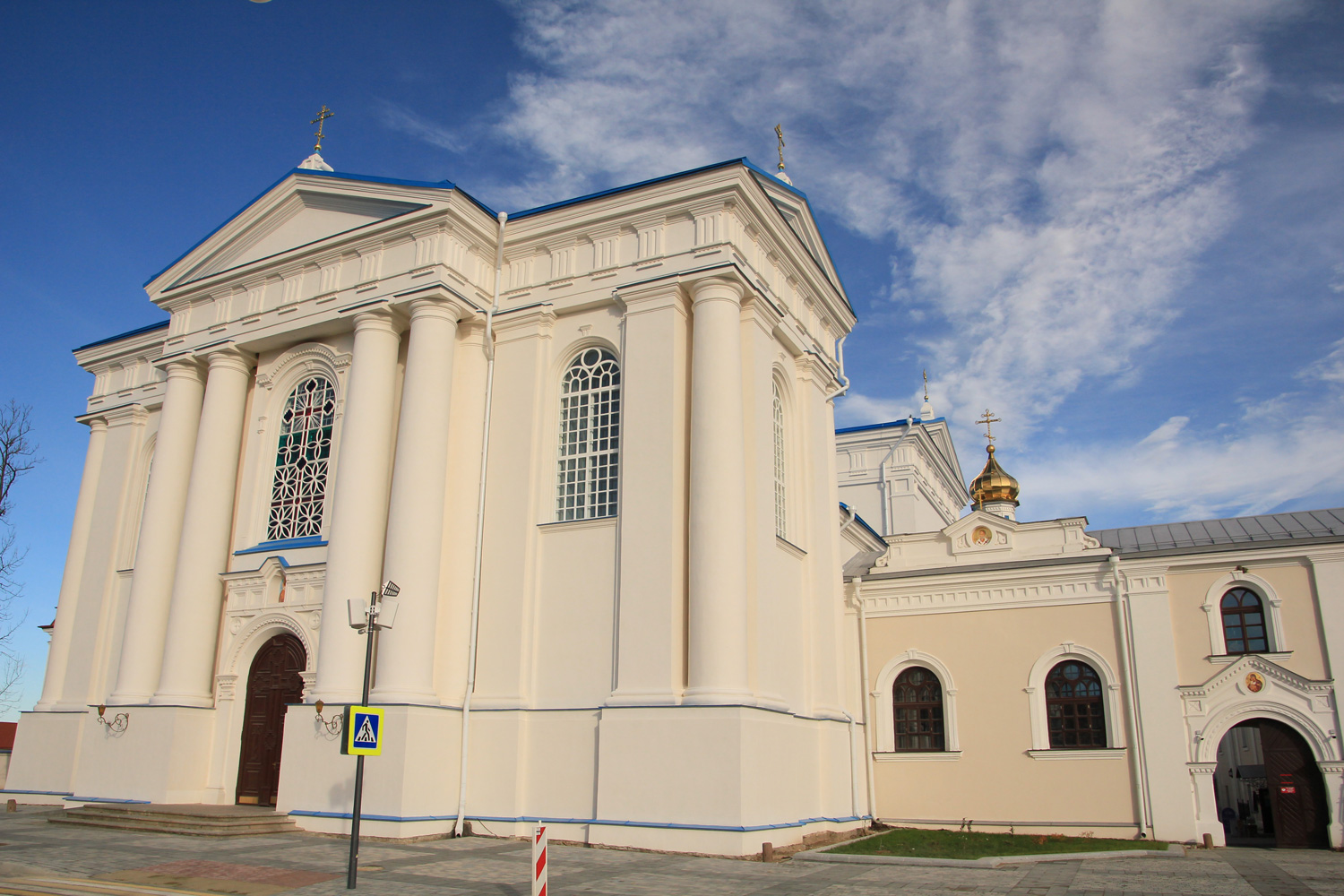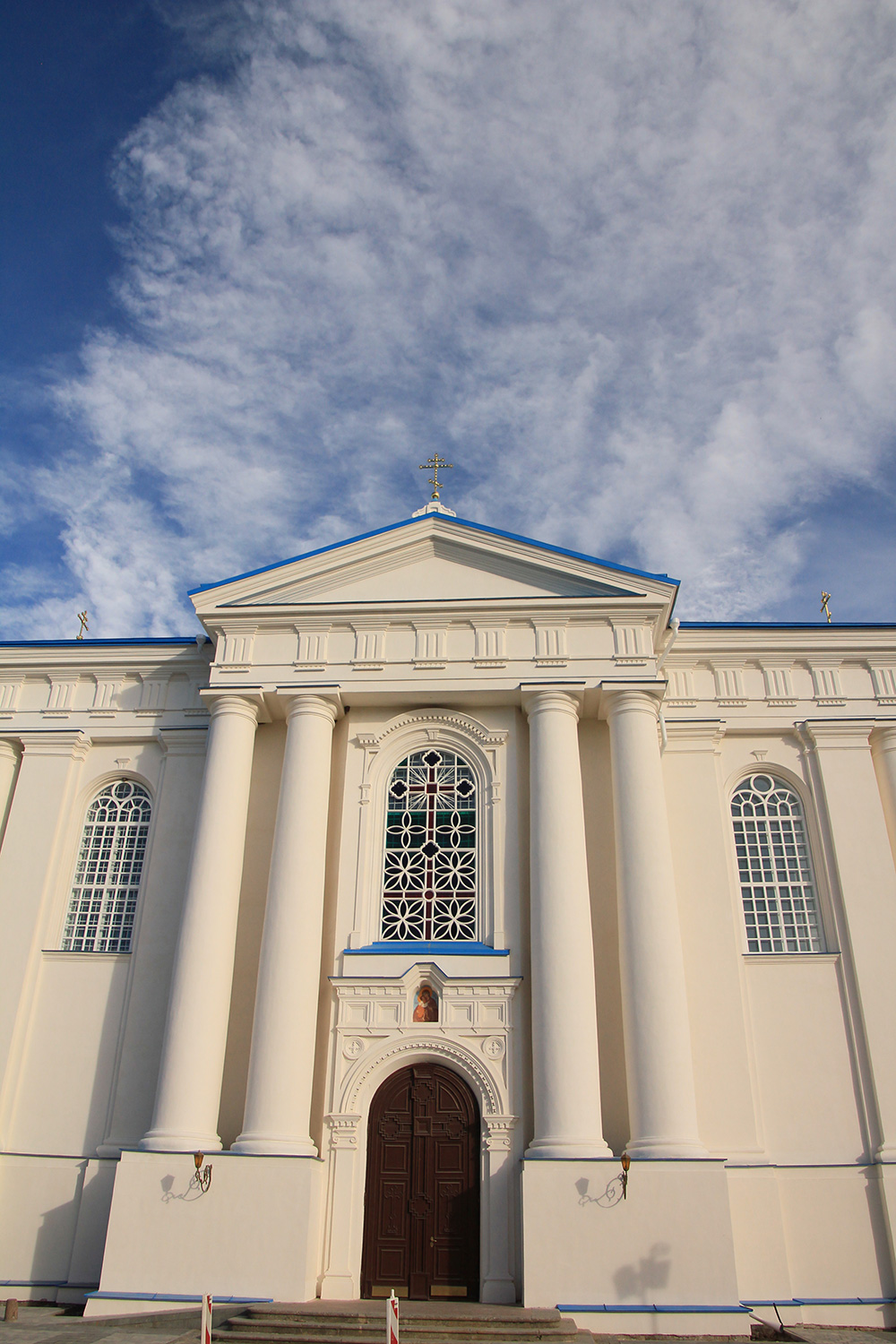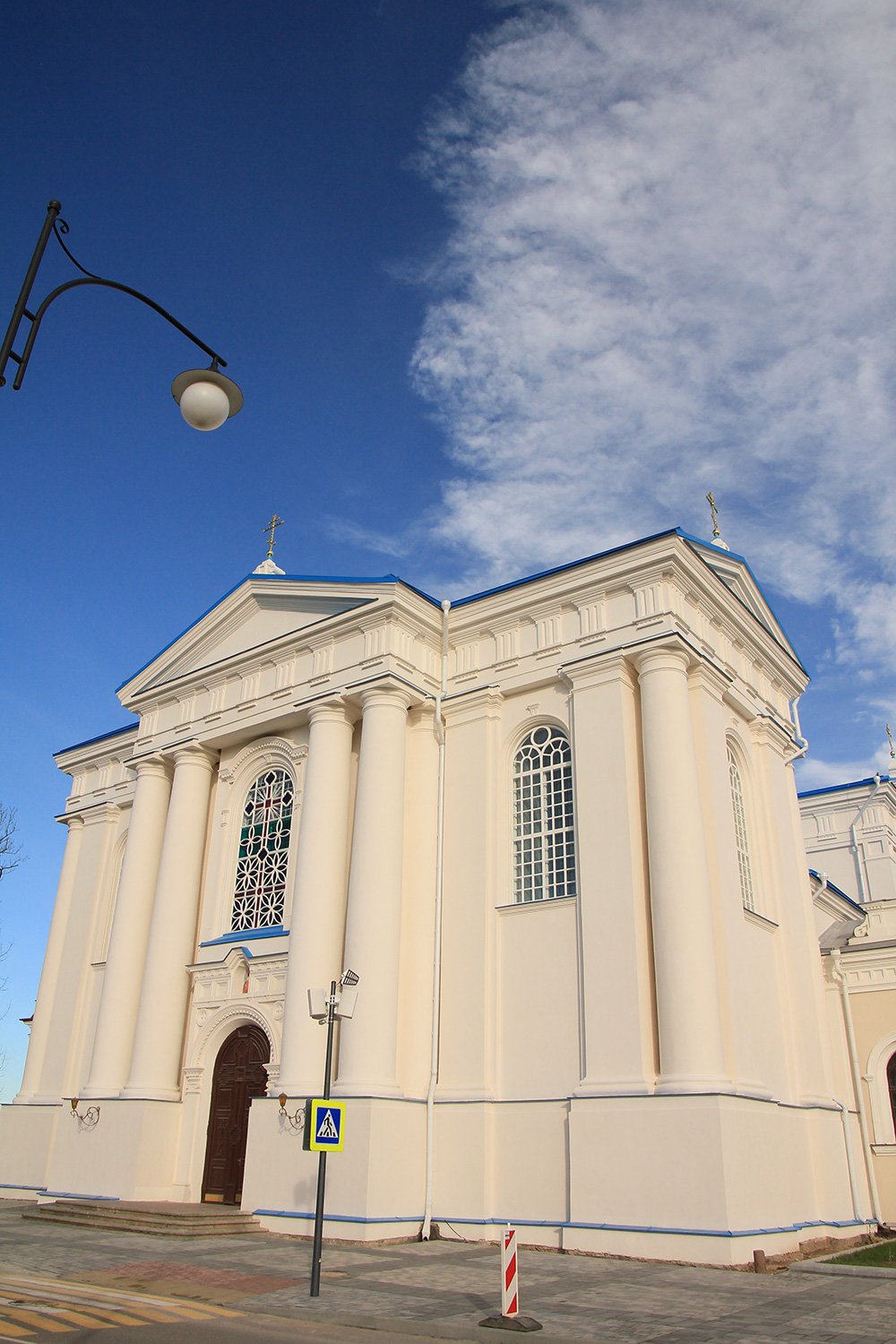Its history is inextricably linked with the history of the monastery, and its architecture is distinguished by a unique and harmonious synthesis of various styles.
Historical facts
The cathedral was founded in 1613 on the initiative of Ivan Meleshko, castellan of Smolensk, who at that time owned Zhirovichi. The interior decoration was made with funds donated by Lev Sapega. Construction lasted for almost 40 years and was completed in 1760.
Architecture
The Assumption Cathedral is a grandiose structure that harmoniously combines the features of various architectural styles:
Baroque: typical for facades decorated with pilasters, cornices, and sculptural elements.
Rococo: takes the form of elegant decorative details, ornaments, including on facades and in the interior.

Classicism: can be seen in strict lines, symmetry, as well as in the use of antique motifs in decor.
Byzantine architecture: reflected in the basilica layout of the cathedral, which is characteristic of ancient Christian churches.
The height of the cathedral reaches 40 meters, and the length is about 55 meters.
The interior of the cathedral is distinguished by its luxurious decoration, made in the traditions of icon painting and decorative art of the Orthodox Church.
During its history, the temple went through several reconstructions and rebuildings - in 1655, 1821 and 1867. The cathedral received its modern appearance after the last reconstruction.
Interesting facts
Towers: The original design called for two towers on the main façade, but these were never built.
Domes: The cathedral has five domes, which symbolize the five wounds of Christ.
Iconostasis: in 1779, Grigory Medvedsky was invited to paint it. The “Savior Pantocrator”, which is the central image, and the icons of the apostles also attract attention.
Interior: the interior decoration of the temple is impressive with the richness of iconostasis, paintings, sculptures, as well as the use of valuable materials such as wood, marble and gold. The shrine has preserved paintings from different times. For example, the painting on the ceiling under the dome dates back to the 18th century.
World War II: the temple survived during the difficult years. It suffered no damage from bombing and shelling. At the same time, eyewitnesses of military events and old-timers claim that there was a huge bomb crater in front of the temple. However, the building remained sound.
Today, the Holy Assumption Cathedral is not only a religious center, but also an important architectural monument, a symbol of Zhirovichi Monastery and one of the most famous churches in Belarus. It attracts many pilgrims, tourists and simply believers who come here to venerate the shrines, pray and enjoy the beauty of this wonderful structure.


